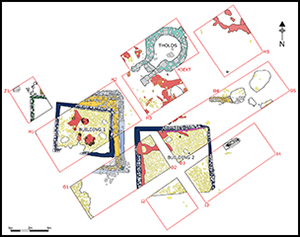Article contents
Light in a Neolithic dwelling: Building 1 at Koutroulou Magoula (Greece)
Published online by Cambridge University Press: 09 October 2015
Abstract

Light has been considered in various archaeological contexts from the Bronze Age to post-Classical periods, but largely in association with religion and ritual. The importance of light in the daily routines of a Neolithic dwelling is the context for this investigation, which employs 3D computer visualisation to test light levels in a variety of different architectural structures and weather conditions. The results reveal how opportunities for using domestic space for specific tasks changed at particular times of day. Light may have operated not simply in a functional sense but also to divide domestic space and provide a distinction between public and private areas.
- Type
- Research
- Information
- Copyright
- Copyright © Antiquity Publications Ltd, 2015
References
- 8
- Cited by


